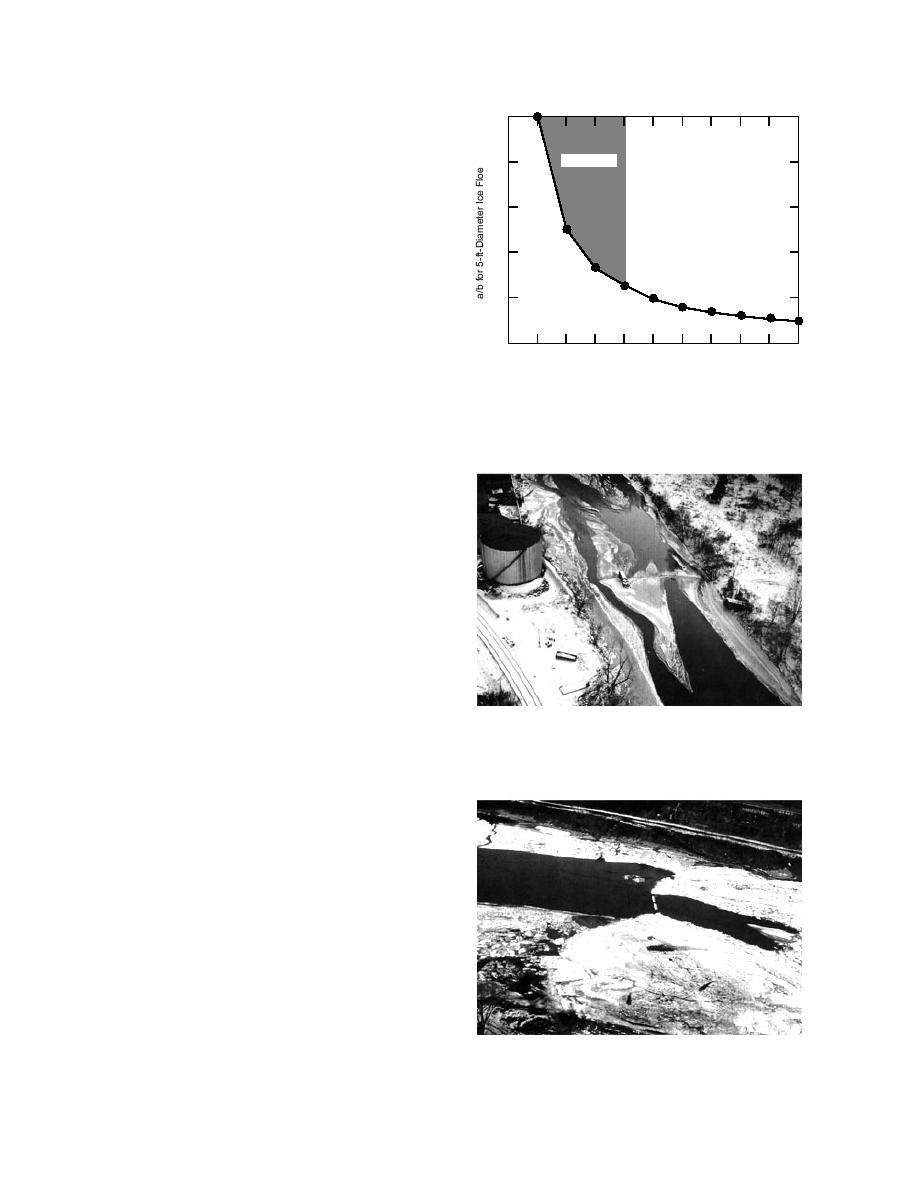
cost. Multiple-sag booms are used primarily on
1.0
large rivers. These rivers typically have much lower
flow velocities and greater flow depths, resulting
Ice Arching
0.8
in more favorable river hydraulics for ice cover
formation. These booms help stabilize the ice, pre-
venting large ice sheets from floating into a navi-
0.6
gation channel. Multiple shore and bed anchors
distribute the loads the boom will experience and
0.4
also help maintain the desired geometry. Each boom
design may require a specific shore anchor design
to allow boat passage or to span a large river.
0.2
Shear booms are designed to direct incoming
ice and floating debris away from problem areas,
typically navigation channels and flow intakes at
0
10
20
30
40
50
Gap Opening (ft)
power dams, but they can also be used as ice form-
ation booms in high-velocity areas in fast-moving
Figure 2. Gap opening vs. a/b value for a floe 5.0 ft
streams and rivers.
(1.5 m) in diameter. The opening must be 20.0 ft
(6.1 m) or less for an arch to form.
Ice arching
When ice floes pass through a constriction in a
river, they can arch across, forming a stable ice
bridge across the opening. Calkins et al. (1982)
found a relationship in laboratory tests between
the open-water width between two structures, b,
and the size of the solid ice floes, a, passing through
that opening indicating when a stable ice arch
would form. The minimum a/b ratio for establish-
ing a stable arch for rafted floes was approximately
0.8. Calkins et al. found in laboratory tests,
using plastic blocks to simulate ice, that when the
a/b ratio was greater than 0.3, ice arching was more
frequent. Conversely if the gap opening increases
and the ice floe size remains approximately con-
stant, formation of an ice cover would be unlikely.
Figure 3. Funnel-shaped ice formation at Oil Creek,
Calkins et al. also found that an increase in the a/b
Pennsylvania.
ratio from 0.1 to 0.2 decreased the amount of ice
passing through the opening by tenfold. Although
solid plastic blocks were used in the model study,
similar limits seem to apply to frazil ice pans. If
the estimated floe size, for example, is 5 ft (1.5 m),
then the open-water width should be no more than
20 ft (6.1 m) (5.0/20.0 = 0.25) for an arch to form
(Fig. 2). As the gap decreases, the a/b value in-
creases until it reaches the value of one, or 100%
ice cover.
A single-sag boom on Oil Creek in Oil City,
Pennsylvania, created an open-water gap between
two shore ice covers (Fig. 3) The gap opening in-
creases with distance upstream of the structure and
therefore could not meet the arching criteria. The
Allegheny River ICS, in comparison, had large 20-
ft- (6.1-m-) diameter frazil pans and parallel ice
shear walls in the open-water approach to the ice
Figure 4. Parallel ice shear walls at the Allegheny River
boom (Fig. 4). The a/b value was within accept-
ice boom.
3



 Previous Page
Previous Page
